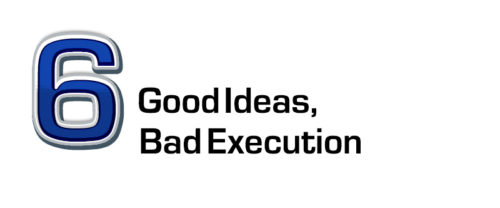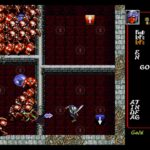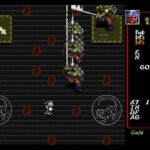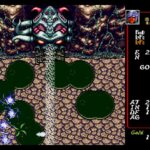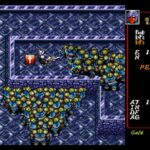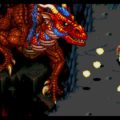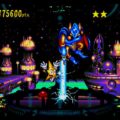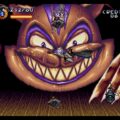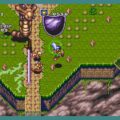Developer: Westone Publisher: Sega Release: 1995 Genre: Action
Dungeon Explorer was one of the earliest and only Turbo Grafx-16 pseudo RPGs. As a fan of Gauntlet it also appealed to me as the two games are similar. I spent a lot of time on the game, both because it was good and also because…..it is not like the system had a rich library in the US. The Sega CD would get in on the action later in its life with promises of higher production values, an expansive quest, and better gameplay. It fulfills at least two of those promises. A lack of balance ultimately ruins this one.
Although they share the same name this edition of Dungeon Explorer is all new. The loose story in the manual tells the story of the Goddess of Ambition. With the ability to grant any wish the Goddess is sought by many. The Darkling, a fearsome beast afraid of mankind, kidnaps the Goddess and locks her away in his dungeon for eternity. With the promise of any wish six adventurers venture to save her from her fate.
While they are not the same title both versions of Dungeon Explorer have their similarities. You have your choice of multiple character classes although there are less here. The knight, elf, mage, beast, ninja, and monk all specialize in different categories. The beast starts with the most hit points but is slow while both the ninja and elf are the fastest. Each hero has their own individual weapons and armor as well as body force, a special skill unique to them. This is a step back from the Turbo Grafx games which gave everyone two skills. This is only one of many changes made to the game in terms of gameplay.
The structure of the game is both similar and different. You explore various dungeons throughout the world as the title suggests. But there is no overarching story to connect them or even NPCs or towns to visit. Freedom Hill serves as the hub from which you can access the lone shop, switch characters at Jojo’s bar and technically tackle the game’s six dungeons in any order. I say technically because there is a clear order the game wants you to follow that becomes apparent instantly. Once you step into one of the “later” dungeons and die immediately it becomes a matter of finding which one the game wants you complete first. This is because of the game’s stat system.
In this version of Dungeon Explorer you collect experience points and level up. However leveling up only increases your maximum hit points. This does wonders to allow you to survive punishment longer. But the only way to raise your attack, defense, and intelligence is to buy weapons and armor or finding temporary items in the dungeons. This is in contrast to its NEC counterpart where every dungeon gave you the option to permanently raise one stat, essentially creating a custom character. To its credit there were more dungeons to make that system work. Unfortunately because of the game’s structure it barely works as is.
The problem comes in the game’s balance, or lack thereof. Because the only way to boost stats is to buy new equipment Dungeon Explorer is excessively grind heavy. Weapons and armor are expensive and the game is stingy with its gold. For the majority of the game piles of gold only give 30-40 gold. With new gear running in the thousands that is a lot of grinding. It means entering a dungeon, collecting as much as you can and warping out to do it again. It grows tedious fast and although the chunk of gold awarded from bosses helps somewhat it is not enough to offset the repetitive runs you will have to suffer through. This is unfortunate as you it is necessary as the difficulty is also punishing.
In redesigning the game it plays more like Gauntlet. That means each dungeon is comprised of long corridors with monster generators a plenty. The rate at which they spawn new demons is too fast and if left unchecked they will fill a room in short order. If two or three are present it takes seconds. Without adequate attack power it is all but impossible to stem the tide. But you need to as destroying a monster generator is one of the only ways to get gold. You need the gold to buy the equipment necessary to make any kind of progress in a dungeon. This feedback loop repeats for every dungeon unless you are willing to sacrifice and do a few runs to buy the higher level gear. It is doable but not fun. But the difficulty does not end there.
Even in an optimal setup you are still subject to RNG. The food meter is just as much of a threat as your dwindling life bar. The max food is 1000 and just like Atari’s game it always ticks down and food potions are random. Unless you find the backpack you can only carry four items. Prudence dictates that health potions and an escape wing are the most important. But it is entirely possible to find neither. Some of the later dungeons are grueling in their length and the random nature of the game can be cruel. It is soul crushing to reach a dungeon only to have to warp out because you have minimal health and no items. This is a scenario that happens constantly and saps any will to continue with the game. It is sad as a little balancing could have made this an excellent game.
In Closing
Dungeon Explorer could have been great. But its arcade like design simply does not work. In multiplayer its problems are less strenuous. But as a single player title it is too frustrating to recommend. This is a case of wasted potential.
